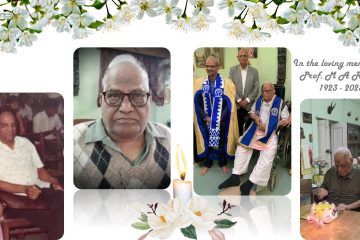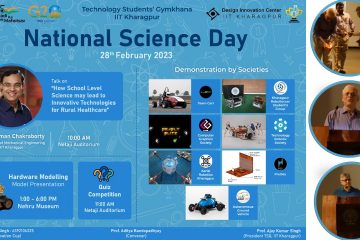
“I was a naïve, confused 21-year old when I joined IIT Kharagpur in 1982 through an open advertisement. Having appeared for a three-step test which included written, typing and interview, my first posting was at the Department of Humanities and Social Sciences. By 25, I graduated to the secretarial post from clerical cadre by clearing set of internal examinations.
 It was the time when predecessors of computers ruled office work.
It was the time when predecessors of computers ruled office work.
What am I talking of? Typewriters.
Typewriters manufactured by companies like Remington, Godrej, Halda and Facit , were mostly used in this Institute for preparing a typed document. Carbon papers were used for making 3-4 copies of the same.
Guess what was the most challenging part of typing? Manual correction.
 You had to have an eye for detail, coupled with skilled mental calculation ability for adjusting the paper and roller of the typewriter. We used correcting fluid for correction.
You had to have an eye for detail, coupled with skilled mental calculation ability for adjusting the paper and roller of the typewriter. We used correcting fluid for correction.
In case of an examination or a seminar / workshop, multiple copies of a single document were required. This involved manual typing on Kores Stencil papers. These stencil papers were fitted on the inked roller of a Gestetner Cyclostyling machine. Papers were placed on its tray.
A stencil paper was a combination of a translucent type paper on the top and carbon paper below and thereafter a hard cover on which the impression of the typed matter could be seen. While typing, the translucent paper got perforated by strokes of the letters of the typewriter and thereafter when placed on inked roller of the Cyclostyling machine the impression got printed on the copying papers. Around 1984 or so, a small black and white photocopier machine was added as office equipment.

Possibly by the end of 80’s the Rural Development Centre was given two desktop PCs mainly for students and faculty members. So, when in 1986 I was posted there, I touched a keyboard for the very first time! Slowly, students there, helped me learn this whole new technology. As far as I remember, MS-DOS was the operating system and WordStar and Chi were typing programs.
Six years later, I was posted at Materials Science Centre. Besides manual typewriters there, a Network Electronic typewriter was inducted sometime later. This had a display screen and the option to correct a typed document by an internally fed Eraser. The storage capacity of this electronic typewriter, however, was very less. Sometime around 1996, a desktop PC with a deskjet printer was installed in the office. My joy knew no bounds! I practically started learning the nuances of the computer from then on. Manual and electronic typewriters gradually faded out with the induction of computers at the Institute.

My journey in administrative sections started in 2006 when I was posted at the Director’s Office where I stepped into a new world of technology. Here, I learnt to use the scanner, fax machine and network connected photocopiers. The colour printer and colour photocopier with a scanner are the recent add-ons to a modern approach to office automation.
The Director’s Office maintains a computer registered filing system with a unique file code which helps locating a document kept in a coded file. Simultaneously, we also keep a hard copy of the same document in physical files, like previously.
Talking of evolution of office automation, IIT Kharagpur has developed the unique ERP (Enterprise Resource Planning) system which is the most significant part of office automation across the Institute. e-Office is also an added advantage.
So you see, with over three decades of service, I have witnessed the evolution of office automation from a very close proximity. I have had the scope of working from typewriters to computers. Today’s GenY might not have even heard of a manual typewriter leave alone working on it. However, at the same time I feel they are more fortunate as they are exposed to sophisticated gadgets of office automation from a very early age.
Tell me honestly, have you seen a typewriter?’’
Graphics : Suman Sutradhar



